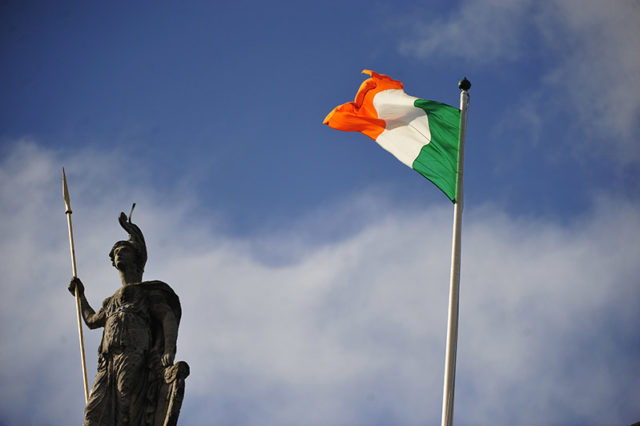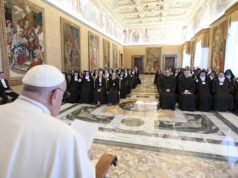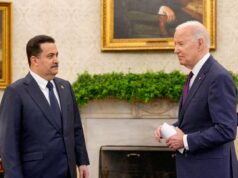THURLES, Ireland — A New Zealand cardinal told a conference on the future of parishes in Ireland that his diocese benefited from the appointment of church workers known as lay pastoral leaders who exercise many functions that normally would be the responsibility of a parish priest.
Cardinal John Dew of Wellington, New Zealand, later told Catholic News Service that the lay pastoral leaders, separate from lay ecclesial ministers, “are leaders with the priests and we are giving them leadership responsibility rather than just being a worker who is treated as a worker.”
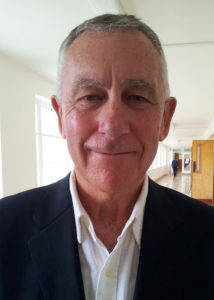
He acknowledged that the priest shortage in his diocese was “severe,” but said the introduction of lay pastoral leaders was more about providing an opportunity for laypeople to work together with priests rather than a solution to the clergy shortfall.
“I believe it works no matter how many priests you have because people are willing to work together collaboratively and co-responsibly,” Cardinal Dew said. “They understand the church doesn’t belong to the priest — it belongs to everyone.”
The two-day conference, titled “The Future of the Irish Parish: Lessons from Abroad,” was organized by the Irish Institute for Pastoral Studies at Mary Immaculate College’s campus in Thurles. The conference followed by days the visit of Pope Francis, who addressed the triennial World Meeting of Families in Dublin.
Lay pastoral leaders were introduced in the Archdiocese of Wellington in 2006. The archdiocese has a Catholic population of 78,198, about 12 percent of the overall population, and 114 diocesan and religious priests. Priests continue to administer the sacraments.
In Wellington, the formation program for lay pastoral leaders can take four to seven years to complete. Cardinal Dew paid tribute to those who undertake the course while juggling family and work commitments. As a model, it has not been adopted by all New Zealand’s diocese.

The archdiocese, Cardinal Dew explained, has a specific fund to cover the cost of paying lay pastoral leaders.
“It is a challenge to the diocese; the parishes pay into a lay pastoral leader fund as part of their levies. Some people have also made moderate bequests that have gone toward this fund,” he said.
Father Eamonn Fitzgibbon, institute director, told CNS that traditional parish life in Ireland has “tended to be very priest dependent.” But as the decline in priest numbers makes itself felt, the Irish church is trying to move away from such a model because “it is not sustainable,” he said.
“We are trying to make sure that something new can emerge and can be facilitated,” Father Fitzgibbon explained. “The future reality is something we must go out and meet and one of the ways of doing that is to study what has happened abroad and to hear from other dioceses how they developed their method of pastoral renewal.”
Retired Bishop Michael Wustenberg of Aliwal, South Africa, addressed 150 delegates on the theme, “Lessons from South Africa: The Parish as a Community of Communities.”
He described the priest dependent model as the one “provided for church,” and said that in this passive model, the priest does everything.
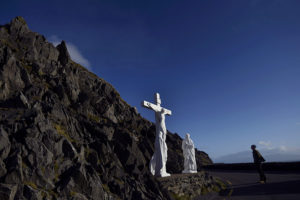
The model of a community of communities in South Africa had fostered small communities that gathered weekly around the Bible and then come together on Sunday to celebrate a Liturgy of the Word. The gatherings often are led by lay leaders because priests visit for Mass once a month, he said.
When Bishop Wustenberg arrived in 1992 in the rural diocese, there were 16 priests for 42,300 Catholics and large distances separated parishes. By the time he retired in 2017, the number of priests had dropped to nine. But one major change found that all of the priests were African while all of the European missionaries had retired.
The promotion of lay leaders was necessary because of “the lack of priests,” Bishop Wustenberg told CNS. The move was prompted by the Second Vatican Council and its call to more broadly involve laypeople in the life of the church and an internal discussion about the role of the people of God as well as the church’s role in South Africa under apartheid.
Unlike the Wellington Archdiocese, lay pastoral leaders are paid positions, the leadership roles in the Aliwal Diocese are voluntary. Ongoing training happens “on the job” with priests helping with training when possible, the bishop said.
“Enthusiasm is essential. A tired guy won’t move anything with anybody. But a spirit of holy daring is also essential,” he said.
Archbishop Kieran O’Reilly of Cashel and Emly, Ireland, who opened the conference, told CNS that his archdiocese has no pastoral workers or pastoral lay leaders. “We have one man recently appointed to the role of pastoral director for the diocese and he is working at the moment on a listening process for Cashel and Emly,” he said.
The archbishop said he hopes the listening process will chart a path into the future showing how the laity can get more involved.
“The Holy Spirit speaks to us through the statistics and the facts,” he said, “so we must be open to seeing what must be put in place for the diocese for 30 years down the road.”


